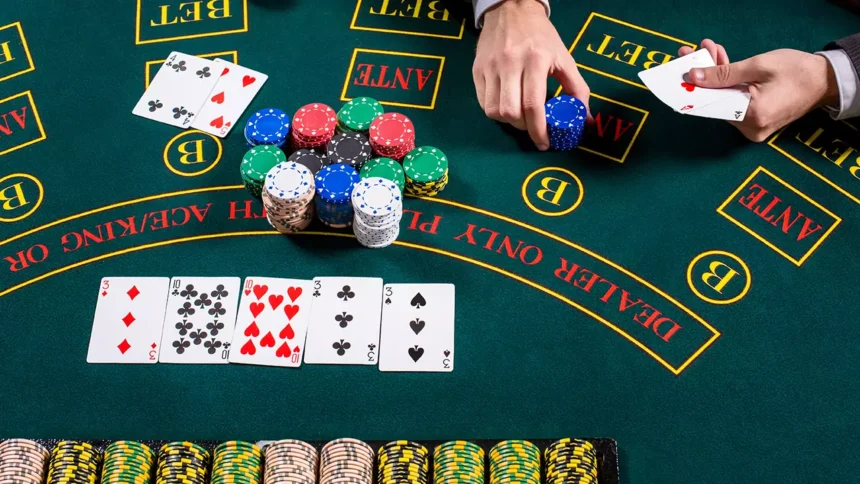When it comes to poker, Texas Hold’em is one of the most popular formats of poker. It is simple to learn, fun to play, productive in nature, and keeps the players on their toes throughout the game.
One of the most important things to understand while playing poker is how the hands are ranked. These hand combinations, also known as poker sequences, are the deciding factors of who wins a round. It doesn’t matter if you are starting or looking to refresh your knowledge; this guide will help you by breaking down each poker sequence from highest to lowest with easy examples. If you are ready to start playing, the first step is to download poker app and get familiar with the game hands.
A Comprehensive Guide to Poker Sequences in Texas Hold’em
What is a Poker Sequence?
In Texas Hold’em, each player tries to make the best possible five-card hand using a combination of their two private cards (also known as hole cards) and five community cards. The value of these hands is determined by a standard order known as poker hand sequences. These sequences help decide which hand is stronger among the players till the end. The better the sequence, the higher your chances of winning the round.

Poker Hand Rankings from Highest to Lowest
- Royal Flush
- The strongest possible hand in Texas Hold’em.
- It includes A, K, Q, J, and 10, all from the same suit.
- Example: A♠️ K♠️ Q♠️ J♠️ 10♠️
- Straight Flush
- Five cards in a row, all from the same suit.
- Slightly lower than a Royal Flush, but still a rare and strong hand.
- Example: 5♦️ 6♦️ 7♦️ 8♦️ 9♦️
- Four of a Kind
- Four cards of the same rank and one extra card.
- Example: 9♣️ 9♦️ 9♥️ 9♠️ 3♠️
- Full House
- A combination of Three of a Kind and a Pair.
- Example: K♦️ K♠️ K♥️ 6♣️ 6♠️
- Flush
- Five cards of the same suit, not in any particular order.
- Example: 2♣️ 6♣️ 9♣️ J♣️ Q♣️
- Straight
- Five cards in sequence, but from different suits.
- Example: 4♠️ 5♦️ 6♣️ 7♥️ 8♠️
- Three of a Kind
- Three cards of the same number, with two unrelated cards.
- Example: 7♣️ 7♦️ 7♠️ Q♦️ 2♠️
- Two Pair
- Two separate pairs and one side card.
- Example: J♣️ J♠️ 4♦️ 4♠️ 9♥️
- One Pair
- One pair of cards with the same number.
- The remaining three cards are all different.
- Example: 6♠️ 6♥️ 3♣️ 9♦️ K♦️
- High Card
- When no pair or sequence is formed, the hand is judged by the highest card.
- This hand is called “Ace high.”
- Example: A♣️ 8♦️ 5♠️ 3♠️ 2♠️
Each round of Texas Hold’em poker revolves around forming one of these hand sequences. The player with the highest-ranking hand at the end of the final round wins the pot.
Also Read: Find The Best Online Poker Game That Matches Your Skill Level
Why Sequences Matter While Playing
Understanding poker hand sequences is crucial when making decisions while playing Texas Hold’em. Every round involves evaluating your hand and comparing it to possible hands your opponents might have. When you are aware of where your hand stands in the ranking, you can make a better choice whether to fold, call, or raise.
For example, holding a flush may seem strong, but if the community cards show a possible full house, you need to think carefully before making your next move. The more familiar you are with the hand rankings, the more confident you will feel during the game.
It is not just about having good cards; it is about knowing how good they really are compared to everything else on the table.
Conclusion
Understanding poker hand sequences is the foundation of poker. These rankings are the same in every round, and they help you know exactly where your hand stands.
Whether you are dealt a strong combination or a simple high card, knowing the sequence helps you make better decisions throughout the game. It is not about memorizing everything at once but about recognizing patterns with practice. As you get more familiar with the rankings, your confidence at the table will grow. Keep this article as a reference while you are playing, and build a strong foundation every step of the way.






















